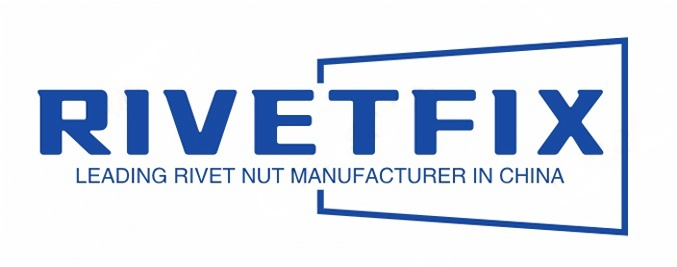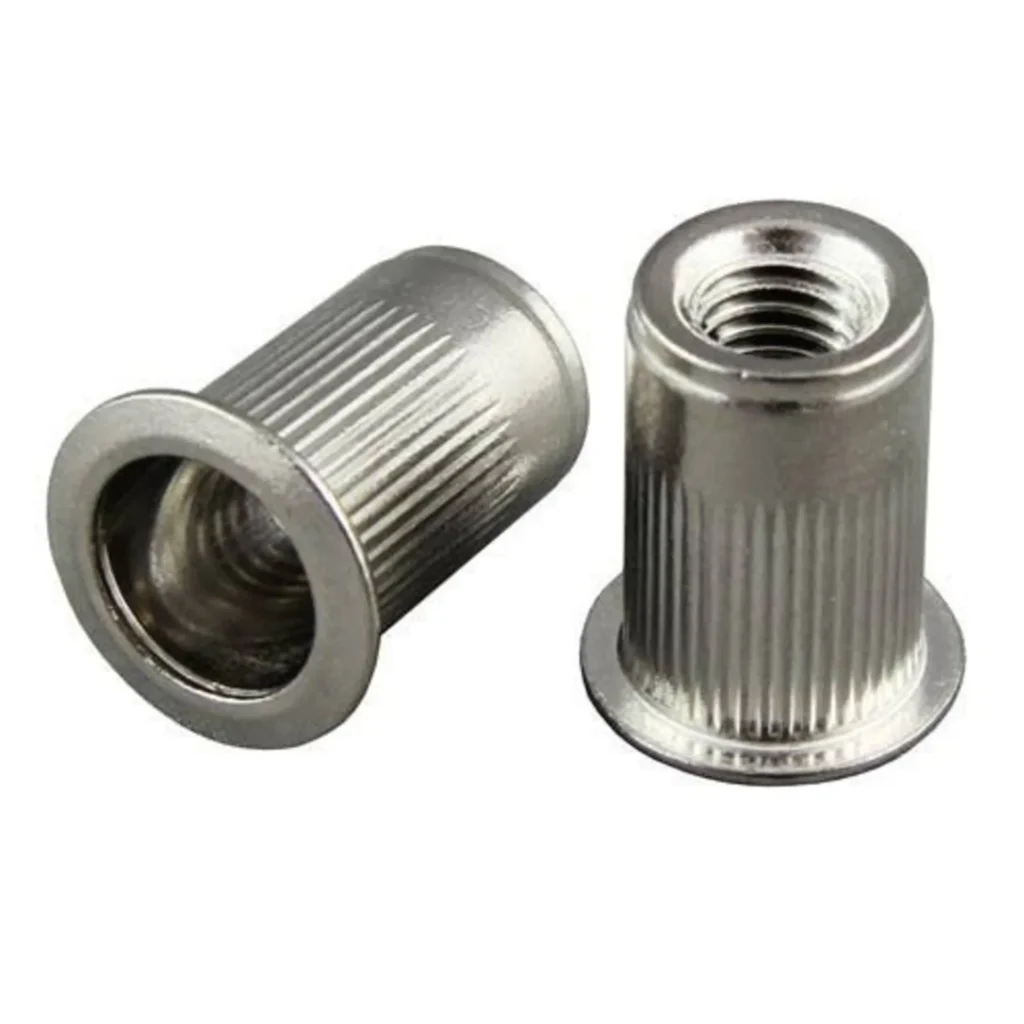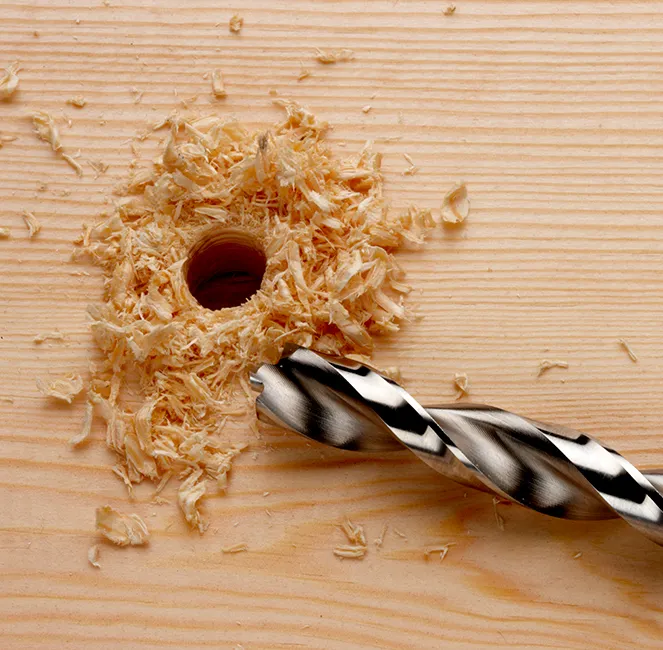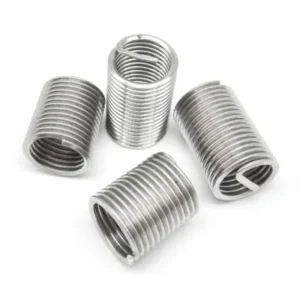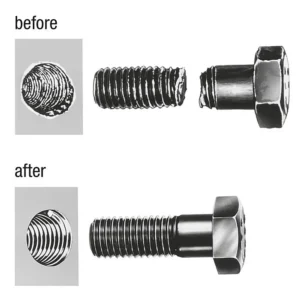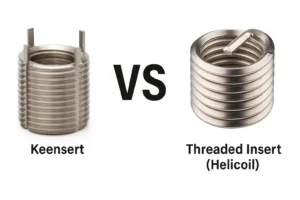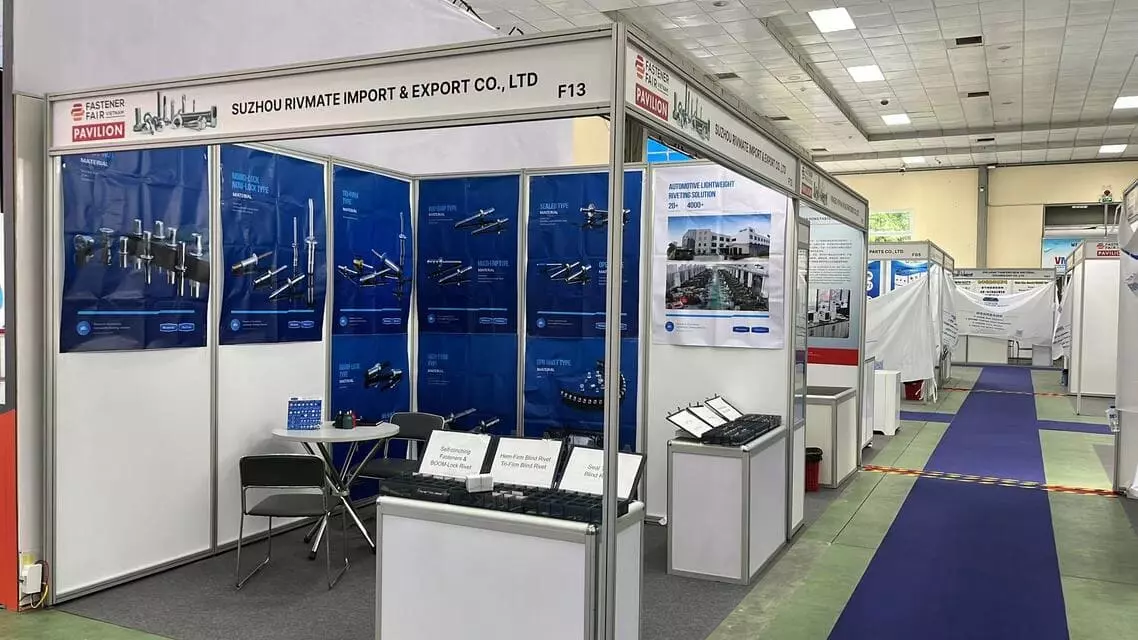Countersunk Rivet Nuts vs Regular Rivet Nut
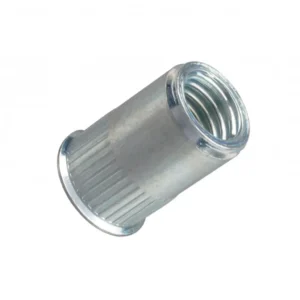
Leading Rivet Nut Manufacturer and Supplier in China
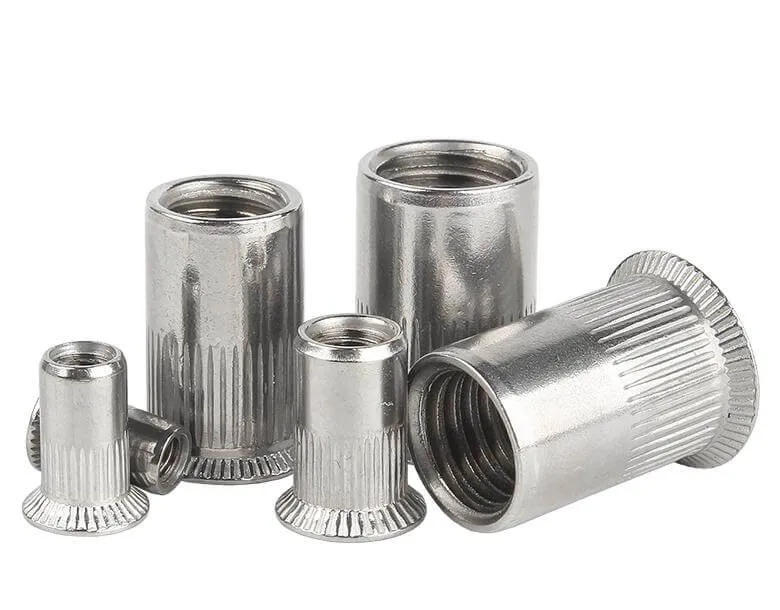
When it comes to choosing the right fastener for thin-walled materials or blind installations, understanding the differences between Countersunk Rivet Nuts vs Regular Rivet Nut is essential. Each type offers distinct advantages depending on the application—whether you prioritize aesthetics, load-bearing capacity, or installation efficiency. In this article, we’ll explore the structural design, installation methods, performance characteristics, and ideal use cases of both rivet nut types to help you make the best choice for your specific project needs.
Table of Contents
What Are Countersunk Rivet Nut / Regular Rivet Nut?
Structural Features:
The head is designed with a conical shape, commonly with angles of 60°, 90°, or 120°;
After installation, it can be fully recessed into the base material, making the surface flush with the nut head;
Suitable for assemblies requiring high standards for appearance, space constraints, or safety.
Installation Requirements:
The installation hole must be pre-countersunk (also known as countersink machining) to match the conical shape of the head;
The angle and depth of the countersink must correspond to the nut specifications to ensure flush installation and proper clamping force;
Without countersinking, poor fitting or loose contact may occur.
Typical Applications:
Electronic enclosures, consumer electronics: improve aesthetics, avoid protruding nut heads that can cause scratches or interfere with other parts;
Automotive interior parts, engine covers, guard plates: prevent nut protrusion to ensure proper fit and clearance for moving parts;
Precision equipment, optical instruments, medical devices: require smooth, interference-free assemblies.
② Regular Rivet Nut
Structural Features:
Commonly designed with flat heads, reduced Head, large flange, or round heads, with the head diameter slightly larger than the nut body;
After installation, the head protrudes above the base material surface, forming a shoulder to prevent nut sinking or rotation;
Simple design, widely used for general fastening needs.
Installation Requirements:
Can be installed directly into a cylindrical hole, no countersinking or special hole shaping required;
Suitable for various thicknesses and strength levels of metal sheets, profiles, or plastics;
Easy to install, efficient, ideal for mass production and assembly lines.
Typical Applications:
Industrial equipment, sheet metal parts, standard enclosures: common fastening solution with good cost control;
Furniture fittings, solar panel mounts, air conditioning casings: convenient installation with sufficient strength;
Most B2B industrial applications: mechanical performance focused, with no emphasis on flush surface.
③ Structural and Appearance Comparison
| Item | Countersunk Rivet Nut | Regular Rivet Nut |
|---|---|---|
| Head Shape | Conical countersunk head | Flat head / small flange / large flange |
| Surface Condition | Flush after installation | Slightly protrudes after installation |
| Hole Requirement | Requires countersinking | Straight drilled hole |
| Installation | Higher precision required | Easy installation |
| Aesthetics | High | General |
| Typical Usage | High appearance / precision demand | General industrial fastening |
What Are the Installation Differences Between Countersunk and Regular Rivet Nuts?
① Higher Installation Requirements for Countersunk Rivet Nuts
1. Countersinking of the Installation Hole
Countersunk rivet nuts feature a conical head design, commonly at 90° or 120°, intended to allow the nut to be embedded flush with the base material surface, achieving a smooth or closely fitting appearance.
This requires the pre-drilled hole to be re-machined with a dedicated countersinking tool or CNC equipment to ensure the hole’s angle perfectly matches the nut’s head angle. Otherwise, issues such as head protrusion or excessive recessing may occur, affecting part assembly or product aesthetics.
- Especially for symmetrical device panels, housings, or precision assembly locations, the accuracy of countersinking directly impacts final assembly quality.
2. Stricter Requirements for Hole Diameter and Perpendicularity
Besides the angle, countersunk rivet nuts require tighter control of the hole’s diameter, tolerance, and perpendicularity.
A hole that is too large may cause the nut to shift off-center or fail to clamp tightly during riveting; a hole too small may hinder insertion or prevent full deformation during installation.
The hole must be perpendicular to the workpiece surface; otherwise, even with countersinking, the nut may contact at an angle, damaging appearance and structural strength.
3. More Precise Installation Equipment and Operation
Countersunk rivet nuts are typically used in high-appearance applications, so the installation process must avoid head protrusion or damage to paint/plating layers on the base material.
It is recommended to use pneumatic or electric rivet nut tools with force and stroke control to ensure stable deformation and tight nut seating.
After riveting, manual visual or gauge inspection should confirm the nut is perfectly flush, neither protruding nor recessed below the surface.
② Easier Installation for Regular Rivet Nuts
1. No Countersinking Needed, Fits Standard Straight Holes
Regular rivet nuts usually feature flat heads, round heads, small or large flanges, with the head resting directly on the base material surface, requiring no countersinking.
Installation only requires drilling a standard straight hole matching the nut size, greatly simplifying preparation.
Hole machining precision demands are lower, allowing quick drilling and installation even in outdoor or mobile construction sites, improving assembly efficiency and flexibility.
2. Universal Installation Tools
Regular rivet nuts can be installed with a wide range of common tools, including:
Manual rivet nut tools for repair or small jobs;
Electric/pneumatic rivet nut guns for production lines or anualbatch installation;
Hydraulic rivet equipment for large or high-strength nuts.
Tool selection is flexible, maintenance is simple, and no specialized equipment is required, reducing capital expenditure.
3. Suitable for Various Materials and Thicknesses
Regular rivet nuts are widely applicable to steel, stainless steel, aluminum, plastics, composites, etc.;
They adapt well to different base material thicknesses as long as the nut’s grip range fits, without needing precise countersink depth or step sizing.
4. Ideal for Mass Production and Automated Assembly Lines
Due to simple processes and standardized operations, regular rivet nuts are perfect for factory assembly lines and high-volume standardized products;
They facilitate automatic feeding and riveting, promoting line automation and labor efficiency.
5. High Installation Tolerance
Even if hole size slightly varies, as long as it falls within the nut’s grip range, installation can succeed, providing good on-site tolerance;
Riveting does not require highly precise positioning, lowering skill requirements and suiting non-professional operators or fast field deployment.
③ Summary Recommendations:
For applications demanding flush, aesthetic, or tightly fitting assemblies such as electronic housings or instrument panels, countersunk rivet nuts are recommended;
For cases prioritizing high efficiency, low cost, and quick installation, such as enclosures, sheet metal, or structural brackets, regular rivet nuts are more suitable.
What Are the Typical Application Scenarios for Countersunk vs Regular Rivet Nuts?
a. Typical Application Scenarios for Countersunk Rivet Nuts
Countersunk rivet nuts, with their heads flush to the base material surface, are especially suitable for applications with higher requirements for appearance and function. These include:
Product Housings and Decorative Panels
Examples include smartphone cases, laptop shells, and home appliance panels. These products demand high surface flatness and overall aesthetics. Countersunk rivet nuts prevent protruding parts, ensuring a smooth appearance.
Handheld Devices
For phones, tablets, and handheld instruments, a compact appearance and prevention of sharp or protruding parts that might scratch users or affect handling are important. The countersunk design enhances the user experience.

Compact Device Connections
In devices with limited internal space, protruding rivet nut heads are not allowed as they may interfere with other components or assembly. Countersunk rivet nuts are the ideal choice here.
Special Conditions Requiring Scratch and Snag Resistance
Applications such as garment machinery, railway interior assemblies, and medical equipment where surface safety and operational environment demands are high benefit from countersunk rivet nuts, which reduce the risk of snags and scratches, improving safety and durability.
b. Typical Application Scenarios for Regular Rivet Nuts
Regular rivet nuts have a simple structure, are easy to install, and cost-effective, making them suitable for:
General Industrial Connections and Sheet Metal Structures
Such as machinery frames, metal enclosures, and equipment housings. Regular rivet nuts provide sufficient strength and stability, meeting the demands of most industrial applications.
Locations Bearing Higher Structural Loads

For structural parts requiring higher connection strength and stability, regular rivet nuts—with their larger contact areas and various head types—offer better load-bearing capacity.
Internal Connections with Low Appearance Requirements
Connection points inside equipment or non-exposed parts that do not require flush or aesthetic surface treatment benefit from regular rivet nuts, reducing costs and simplifying installation.
In summary, countersunk rivet nuts are better suited for applications demanding aesthetics, flush surfaces, and enhanced protection, while regular rivet nuts focus more on practicality, load capacity, and cost efficiency. The choice depends on the specific application requirements.
How Do Countersunk and Regular Rivet Nuts Compare in Strength and Performance?
1. Head Contact Area
The head contact area refers to the effective surface where the rivet nut head presses against the base material, directly affecting the load distribution capacity and compressive strength of the joint.
a. Countersunk Rivet Nut
Structural Features: The head is tapered or chamfered, fitting into a countersunk hole in the base material.
Clamping Principle: The clamping force depends on the contact between the nut’s outer edge and the tapered hole wall.
Actual Contact Area: Limited to the chamfered surface, relatively small.
Effect:
On softer or thinner base materials, the pressure is concentrated, which may cause indentation or surface deformation;
Suitable for connections with high aesthetic requirements but low load.
b. Regular/Flat/Flanged Rivet Nut
Structural Features: The head is flat flanged or enlarged flange design.
Clamping Principle: The flange sits flat against the base material surface, creating a broad clamping area.
Actual Contact Area: Usually 1.5 to 2 times larger than the same-size countersunk nut.
Advantages:
More evenly distributes pressure, reducing local stress concentration;
Improves pull-out resistance, less prone to indentation or deformation;
Ideal for metal structures and higher-load industrial connections.
2. Pull-Out Resistance
Pull-out resistance measures the rivet nut’s ability to resist being pulled out axially (perpendicular to the base material), directly affecting the security and strength of the joint.
a. Countersunk Rivet Nut
Structural Impact:
The head is recessed inside the base material, providing no additional surface support;
Pull-out resistance depends on the deformation zone clamping force plus the chamfer fit, which is limited.
Suitable Conditions:
Best for light-load connections such as electronic housings and decorative panels;
Not recommended for structural parts exposed to sustained high axial loads.
Performance Data (Example M6 Carbon Steel):
Average pull-out strength about 3.5 to 4.2 kN (varies with wall thickness and material).
b. Regular/Flat/Flanged Rivet Nut
Structural Advantages:
The flat flange fully contacts the base material surface, providing a larger support area that resists pull-out;
The deformation zone plus flange together bear axial loads.
Suitable Conditions:
Recommended for medium to high pull-load applications like equipment frames and structural supports;
Effectively prevents loosening or pull-out under heavy load.
Performance Data (Example M6 Carbon Steel):
Average pull-out strength can reach 4.8 to 5.5 kN, about 20–40% higher than countersunk type.
3. Spin-Out Resistance
Spin-out resistance measures the rivet nut’s ability to resist rotation or loosening when bolts are tightened or removed, impacting connection reliability and reusability.
a. Countersunk Rivet Nut
Structural Characteristics:
The countersunk design fits into the base material hole mainly for appearance and flushness, not torque resistance;
Smaller flange area means limited friction, resulting in weaker anti-rotation ability.
Risk:
If the countersunk hole or base material is imprecise or soft, spin-out (empty rotation) can easily occur during bolt tightening;
Not recommended for high torque or high vibration environments.
Performance Data (M6 Carbon Steel, 1.5mm steel plate):
Average torque resistance about 6 to 8 N·m.
b. Regular/Flat/Flanged Rivet Nut
Structural Advantages:
The flange creates a larger friction surface, greatly enhancing anti-rotation capability;
Hex or knurled versions mechanically lock into hex holes or metal surfaces, further preventing spin-out.
Performance:
Suitable for high tightening torque, long-term vibration, or repeated assembly/disassembly;
Hex flange types provide 2 to 3 times the torque resistance of standard round flat heads.
Performance Data (M6 Hex Carbon Steel, 1.5mm steel plate):
Torque resistance up to 12 to 18 N·m.
4. Long-Term Holding Strength
Long-term holding strength refers to the rivet nut’s ability to maintain a secure connection over time under load, vibration, temperature, and humidity changes, reflecting installation stability and fatigue resistance.
a. Countersunk Rivet Nut
Advantages:
Flush installation prevents damage from impacts or scratches;
Suitable for decorative or enclosed connections with low structural loads, providing good aesthetics.
Limitations:
No exposed flange means smaller clamping area;
Requires high precision in hole size and surface quality—poor installation leads to weak clamping;
Prone to loosening, rotation, or deformation under long-term vibration or humid conditions.
Typical Performance:
Poorer long-term stability on thin or soft base materials;
Needs precise machining and controlled installation to ensure reliability.
b. Regular/Flat/Flanged Rivet Nut
Advantages:
Flange increases contact area with base material, improving structural support and locking force;
Can withstand higher axial and shear forces;
More tolerant of hole size and position deviations, resulting in stronger, more reliable installation.
Enhanced Types:
Hex and knurled flanged nuts further improve anti-loosening, anti-rotation, and pull-out resistance.
Long-Term Performance:
Superior holding strength under outdoor, vibration, and high-stress conditions;
Ideal for industrial and mechanical structural joints requiring long-term reliability.
Summary Comparison Table: Countersunk vs Regular Rivet Nuts in Strength and Performance
| Comparison Aspect | Countersunk Rivet Nut | Regular (Flat/Flanged) Rivet Nut |
|---|---|---|
| Appearance Flushness | ★★★★★ | ★★☆☆☆ |
| Pull-Out Strength | ★★☆☆☆ | ★★★★☆ |
| Spin-Out Resistance | ★★☆☆☆ | ★★★★☆ |
| Installation Tolerance | ★★☆☆☆ (requires countersinking) | ★★★★★ (through-hole installation) |
| Long-Term Connection Reliability | ★★☆☆☆ | ★★★★☆ |
| Recommended Usage | Aesthetic priority, light loads | Strength priority, structural connections |
Recommendations:
- Choose countersunk rivet nuts if flush appearance and light-load connections are priorities.
Choose regular flanged rivet nuts for higher strength, stability, and long-lasting durability.
What Are the Cost Differences Between Countersunk and Regular Rivet Nuts?
Countersunk rivet nuts typically have a more complex head structure (angled design, higher precision requirements), resulting in slightly higher manufacturing costs.
On average, their unit price is 10%–20% higher than standard rivet nuts of the same size (depending on material and order quantity).
For special materials or precision-grade countersunk nuts, the price gap may be even greater.
2. Hole Machining Costs
Installing a countersunk rivet nut requires chamfering the base material hole (typically 60°–120°) to match the tapered head.
This adds an additional machining process, which on automated lines may require specialized tools and setup, leading to:
Increased machine setup time;
Slower machining cycle;
More complex processes, raising total machining costs by approximately 5%–15%.
In contrast, regular rivet nuts only require straight holes, are more adaptable, and need no extra processing.
3. Installation Efficiency & Labor Costs
Countersunk rivet nuts require precise alignment and flushness checks during installation, which involve more steps and demand higher operator skill levels.
Improper installation can lead to misalignment or uneven surfaces, increasing the risk of rework or assembly failure.
Regular rivet nuts, on the other hand, are quick and easy to install, ideal for mass production on assembly lines, with significantly lower labor costs.
4. Cost Suitability Recommendations
| Application Type | Recommended Rivet Nut | Cost Control Advice |
|---|---|---|
| High appearance demand | Countersunk Rivet Nut | Accept slightly higher cost for a flush, clean surface |
| Mass industrial assembly | Regular Rivet Nut | Lower per-unit and processing cost, improve efficiency |
| High-precision assembly | Countersunk Rivet Nut | Ensure proper hole machining and precise installation |
| General structural use | Regular Rivet Nut | Balanced strength and cost; best value for industrial use |
How to Choose Between Countersunk and Regular Rivet Nuts?

①. Do You Require a Flush Finish After Installation?
Countersunk rivet nuts are designed with a tapered head that fits fully into the base material, resulting in a flush surface with no protruding parts after installation.
This design is particularly important for applications such as electronics housings, decorative panels, and portable tools, where appearance and tactile feel matter.
A flush finish also prevents sharp edges, reducing the risk of injury or damage to nearby components.
Regular rivet nuts, by contrast, usually leave the head slightly raised above the surface, making them more suitable for non-visible or internal connections where appearance is not critical and space is less restricted.
②. Are There Structural Interference or Snagging Concerns?
In confined mechanical assemblies or interior compartments of vehicles, a protruding rivet nut head may interfere with adjacent components, or become a snag point for clothing, cables, or tools.
Applications like garment machinery, railway interiors, or tight enclosures demand smooth, obstruction-free surfaces—making countersunk rivet nuts ideal for safety and functional integrity.
In such cases, regular rivet nuts may create installation difficulties, user inconvenience, or increased maintenance costs due to their raised profile.
③. Is the Rivet Nut Installed in a Visible Area?
If the rivet nut is installed on outer panels, decorative trims, or other visible parts, the clean, low-profile finish of a countersunk rivet nut makes it the preferred choice.
Designers and engineers typically select countersunk nuts to ensure a neat, uniform appearance across visible surfaces.
For internal structures, enclosures, or hidden joints, regular rivet nuts are a more practical and cost-effective solution due to easier installation and lower unit cost.
④. What Are Your Requirements for Joint Strength and Installation Efficiency?
Regular rivet nuts often feature a larger flange, providing a greater clamping area, which improves both pull-out and spin-out resistance. They are well-suited for higher-load applications.
Countersunk rivet nuts have a smaller contact area, and therefore offer slightly lower strength, making them more appropriate for light to medium-load scenarios.
In terms of installation, regular rivet nuts require only a straight hole and can be installed quickly, making them ideal for assembly lines and mass production.
Countersunk rivet nuts require a chamfered hole, which demands greater precision and additional processing steps, making them better suited for low-volume, high-quality applications with strict aesthetic or structural requirements.
⑤. How Important Are Production Cost and Scalability?
Countersunk rivet nuts are generally more expensive than regular ones due to their complex geometry, material loss, and additional chamfering operations required during installation.
They are often used in high-end equipment, premium consumer products, or applications with strict design constraints, where cost sensitivity is secondary.
Regular rivet nuts are simpler to manufacture and install, making them highly compatible with high-volume, standardized production environments.
Their lower cost, reduced labor demands, and efficient installation make them ideal for projects prioritizing cost control and production efficiency, while countersunk types are more suitable for premium projects where aesthetics and surface finish matter most.
Do You Have Any Questions?
Let Us Solve Your Problem
Source High-Strength Rivnuts in Bulk from Rivetfix
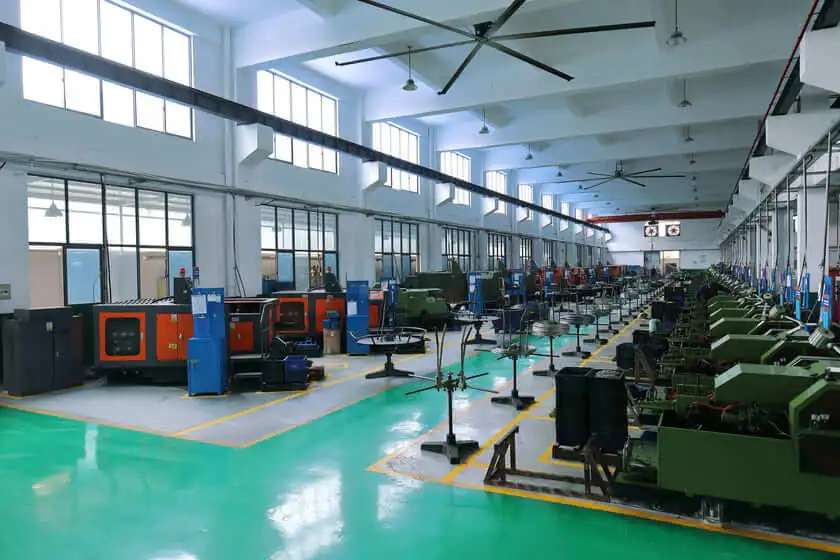
As a leading fastener manufacturer in China with more than 15 years in the industry, Rivetfix are committed to providing first-class quality fasteners and responsive services to the world. We offers a wide range of rivet nuts and clinch nuts designed to meet the unique demands of your projects. Rivetfix ensures you have the right solution for every application. Choose Rivetfix for versatile, cost-effective, and durable fastening solutions tailored to your specific needs. In addition, we can also provide customized rivet nuts service and clinch nuts according to your requirements.
Contact us now for more information and customization options on Rivet Nuts!
Get High Quality Rivet Nuts Quote!
Send Your Rivet Nut Request
For more than 20 years, Rivetfix has helped customers solve many rivet nuts sourcing needs and technical challenges.
Have a question? Contact us and we’ll provide you with the perfect solution.
